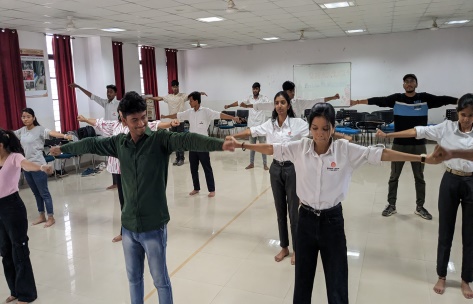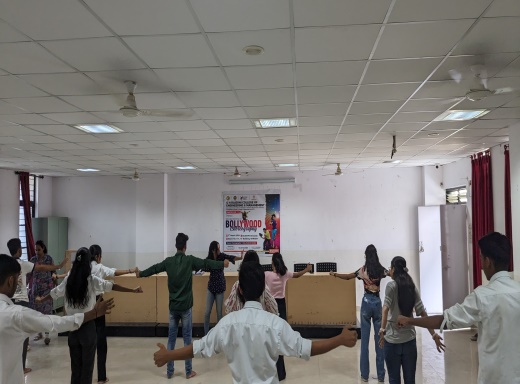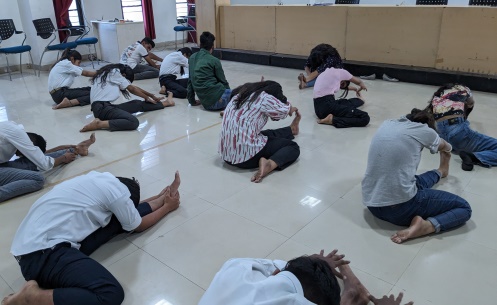G. H. Raisoni College of Engineering And Management, Pune
Dance
Bollywood Choreography

GHRCEM, Pune Conducted One Day Workshop on Bollywood Choreography
GHRCEM, Pune, recently organized a one-day dance workshop for students. A total of 17 students participated in this workshop. This event was conducted under the guidance of Mrs. Amruta Raskar (Dance Club Coordinator), Ms. Rashmi Utekar (Dance Teacher), and Mr. Ashant Rote (Student Coordinator).
Choreography is the art or practice of designing sequences of movements of physical bodies (or their depictions) in which motion form or both are specified. Choreography may also refer to the design itself. A choreographer creates choreographies by practicing the art of choreography, a process known as choreographing. It most commonly refers to dance choreography.
In dance, choreography may also refer to the design itself, which is sometimes expressed by means of dance notation. Dance choreography is sometimes called dance composition. Aspects of dance choreography include the compositional use of organic unity, rhythmic or non-rhythmic articulation, theme and variation, and repetition. The choreographic process may employ improvisation for the purpose of developing innovative movement ideas. In general, choreography is used to design dances that are intended to be performed as concert dances.
Dances are designed by applying one or both of these fundamental choreographic methods:
1) Improvisation, in which a choreographer provides dancers with a score (i.e., generalized directives) that serves as guidelines for improvised movement and form. For example, a score might direct one dancer to withdraw from another dancer, who in turn is directed to avoid the withdrawal, or it might specify a sequence of movements that are to be executed in an improvised manner throughout a musical phrase, as in contra dance choreography. Improvisational scores typically offer wide latitude for personal interpretation by the dancer.
2) Planned choreography, in which a choreographer dictates motion and form in detail, leaving little or no opportunity for the dancer to exercise personal interpretation
OUTCOMES:
• Approximately 17 members from our Dance club have participated in this event.
• They entertained many through their performances.
• It helped to enhance the fun and fellowship policy of our Dance Club.
Organizers thanked Dr R. D. Kharadkar (Campus Director) for giving them the opportunity to plan the event along with Dy. Director, all Deans, Hod, and Senior Faculties for helping us in all ways.


